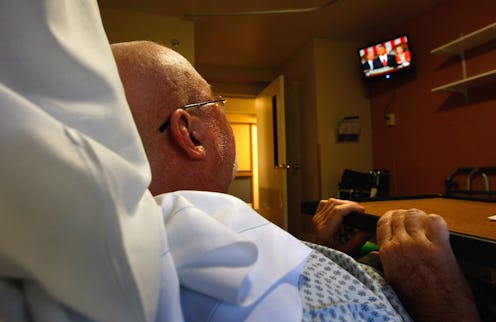News
Could Polio Be Used To Fight Cancer?
By the numbers, there's a good chance that you or somebody close to you will be affected by cancer over the course of the your lifetime. It's one of our longest-running, most aggressive threats to health and life, with millions of dollars pumped into anti-cancer initiatives and research every year. And over the weekend, the folks at CBS News brought a strange, experimental new means of treatment before the public, with a potential that's stirred a fair amount of curiosity and controversy. Simply put, could polio be used to fight cancer?
Specifically, the reports examines how the polio virus — for decades one of the most debilitating diseases in American society, until Dr. Jonas Salk developed a vaccine to inoculate against it in the early 1950s — can be turned around and used to humanity's benefit in the treatment of glioblastoma, a particularly challenging form of brain cancer. Highlighting the efforts of Duke University scientists to turn a once-feared viral foe into an ally, 60 Minutes correspondent Scott Pelley gave viewers an intriguing glimpse at this potentially major new avenue of treatment.
And while it remains to be seen just how effective a treatment this research could bring out, it sounds as though the researchers involved have high hopes. According to Pelley, while the team at Duke would obviously never tell a prospective patient there's a "cure" on the horizon, they're willing to indulge some major optimism amongst themselves: "...words like 'remission' and 'cancer-free,' they're not even hedging on those words."
Here's the basic idea: by directly injecting glioblastoma tumor cells with polio, researchers have found the potential not just to kill existing cancer cells, but to prevent them form further replicating. This is a crucial aspect of any cancer treatment, essentially the same end that the chemotherapy process strives for — eradicating existing cells, and ideally preventing any recurrence or spread. Speaking to Pelley, Dr. Matthias Gromeier described the process as "removing the protective shield" that keeps the immune system from attacking the cancer.
So cancers, all human cancers, they develop a shield or shroud of protective measures that make them invisible to the immune system. And this is precisely what we try to reverse with our virus. So by infecting the tumor, we are actually removing this protective shield. And telling the- enabling the immune system to come in and attack.
To have Gromeier describe it, the idea is simply this: by applying polio to the tumor, the body's immune system reacts just as it would to an actual polio infection, springing to action to fight the virus. But with the polio virus localized within the tumor, the immune system is able to recognize and attack what it otherwise couldn't detect.
Obviously, as with any talk of cutting-edge treatment, caution is of the utmost importance. As Forbes' David Kroll observes, the trials at Duke haven't shown this method to be a catch-all, assured means of recovery — half of the 22 people volunteering themselves for the program have died from their glioblastoma.
This is important information for perspective, though it also shouldn't dampen spirits too much — according to the American Brain Tumor Association, the median two-year survival rate for glioblastoma is only 30 percent. Basically, even with all due restraint and perspective, this is an exciting story of a potentially major development in cancer treatment, however strange it may sound to be looking to polio for a helping hand.
